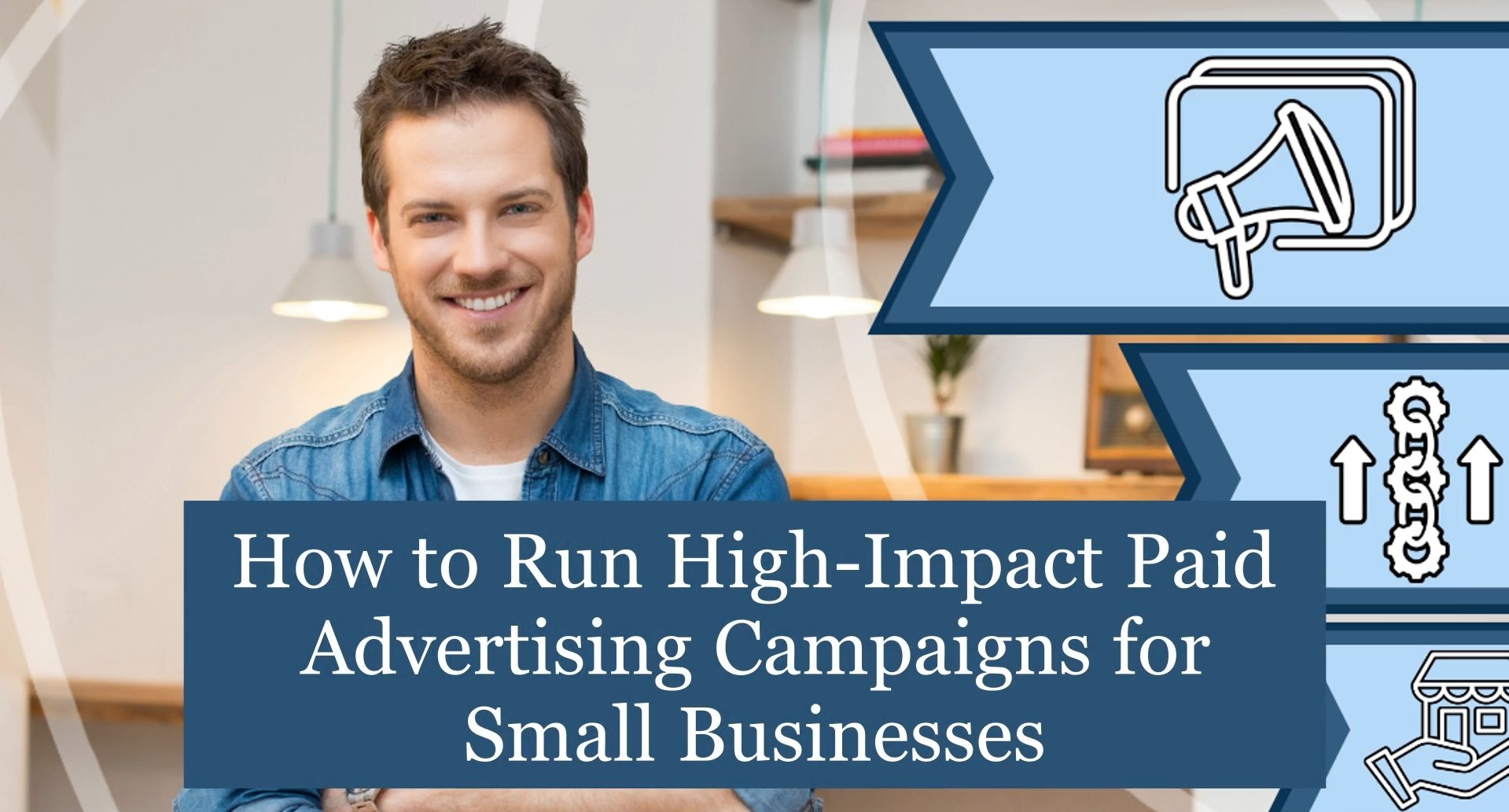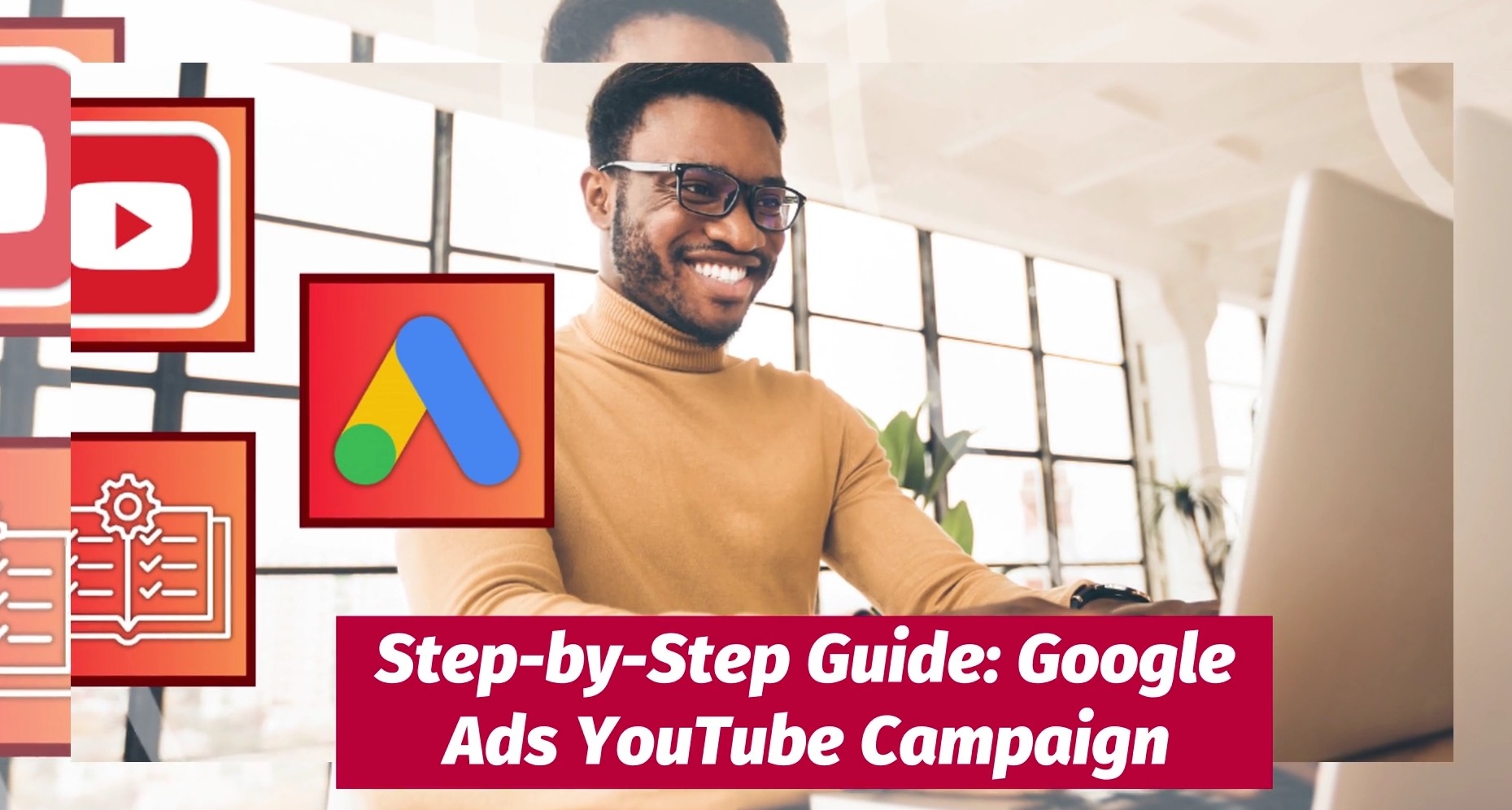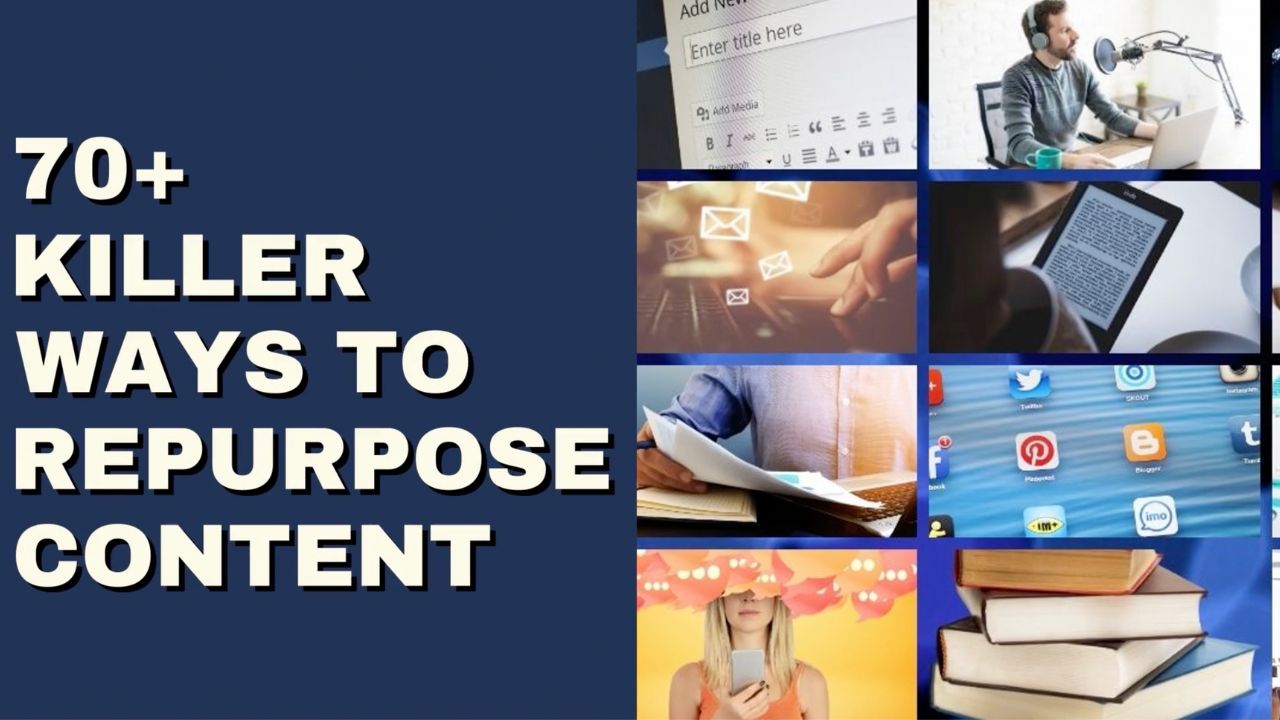Are your paid ads falling short of expectations?
Many small businesses invest in paid advertising only to see minimal returns, struggling with limited budgets, fierce competition, and the complexities of ever-changing ad platforms.
But here’s the truth: paid advertising doesn’t have to drain your budget to be effective. With the right strategy, even a modest ad spend can deliver impressive results—whether it’s generating leads, increasing website traffic, or boosting sales.
This guide will walk you through a step-by-step approach to designing and running high-impact paid advertising campaigns tailored for small businesses. You’ll learn how to:
- Set clear, measurable campaign objectives to maximize ROI
- Identify and target the right audience for better ad performance
- Choose the best advertising platforms based on your business goals
- Craft compelling ad creatives that drive engagement and conversions
- Optimize your budget, bidding strategy, and campaign performance
By the end of this post, you’ll have a clear blueprint for running cost-effective, results-driven paid advertising campaigns that fuel your business growth.
Let’s get started…

1. Define Clear Campaign Objectives
Every successful paid advertising campaign starts with a well-defined goal. Without clear objectives, you risk wasting your budget on ads that don’t drive meaningful results.
Without clear objectives, you risk wasting your budget on ads that don’t drive meaningful results.Click To Post OnWhy Setting Objectives Matters
Your campaign goals shape every decision—from the type of ads you create to the metrics you track.
A well-structured objective ensures you:
- Focus on the right audience and messaging
- Measure success using relevant performance indicators
- Optimize your ad spend for maximum impact
- If your goal is lead generation, you’ll optimize for conversions rather than clicks.
- If you’re aiming for brand awareness, you’ll prioritize reach and impressions.
- If your goal is to drive website traffic, you’ll focus on creating click-worthy ads
Common Advertising Goals for Small Businesses
Here are key objectives small businesses should consider:
- Brand awareness–increase recognition and visibility in your target market.
- Website traffic–drive visitors to your site for further engagement.
- Lead generation–capture contact details from potential customers.
- Direct sales–drive immediate purchases through eCommerce or service-based ads.
Use the SMART Goal Framework
To ensure your goals are actionable, apply the SMART framework:
- Specific—define exactly what you want to achieve.
- Measurable—use key metrics (clicks, conversions, ROAS, etc.) to track progress.
- Achievable—set realistic goals based on your budget and market conditions.
- Relevant—align goals with your overall business objectives.
- Time-bound—set a deadline for achieving results.
As an example of a SMART goal, instead of saying “I want more customers,” define a measurable goal like:
“I want to generate 30 leads through Facebook Ads within the next 30 days while maintaining a cost-per-lead (CPL) under $10.”
By setting clear, measurable objectives from the start, you’ll create a focused, results-driven advertising strategy that maximizes every dollar spent.
2. Identify and Understand Your Target Audience
Your paid advertising campaign is only as effective as the audience it reaches.
If you’re targeting the wrong people, even the best-designed ads will fail to generate results.
Understanding your audience ensures that your ads are relevant, engaging, and ultimately profitable.
Why Audience Research is Critical
Effective targeting helps you:
- Increase ROI—reduce wasted ad spend by showing your ads to those most likely to convert.
- Improve engagement—create messaging that resonates with your audience’s needs and pain points.
- Optimize ad performance—use data-driven insights to refine your approach over time.

How to Define Your Target Audience
Use these methods to build a detailed customer profile:
- Analyze customer data—look at your existing customer base to identify common demographics, behaviors, and purchase patterns.
- Conduct surveys and interviews—directly ask customers about their preferences, challenges, and buying decisions.
- Use analytics tools—platforms like Google Analytics, Meta Audience Insights, and LinkedIn Analytics provide valuable data on your audience’s demographics, interests, and online behaviors.
- Study competitor targeting—analyze the audiences your competitors are reaching with their ads using tools like Facebook Ad Library or SEMrush Advertising Research.
Build a Detailed Audience Persona
To ensure your ads speak directly to your ideal customer, define key characteristics such as:
- Demographics—age, gender, location, income level
- Interests—hobbies, brands they follow, content they consume
- Pain Points—problems they need solutions for
- Buying behavior—how they shop, what influences their decisions
Example Audience Persona
Sarah, 35, is a small business owner who sells handmade jewelry online.
She follows fashion influencers on Instagram, searches for marketing tips on Google, and prefers shopping on Etsy.
Her biggest challenge is standing out in a crowded market, so she’s looking for ways to increase visibility and drive sales affordably.
By knowing who you’re targeting and what motivates them, you’ll be able to craft highly relevant ads that drive real results.
3. Choose the Right Advertising Platform
Not all ad platforms are created equal. The key to running a high-impact paid advertising campaign is selecting the right platform that aligns with your audience’s behavior and your business goals.
How to Choose the Best Platform for Your Business
Each advertising platform has its strengths. Here’s a breakdown of where small businesses can get the best results:
| Platform | Best For | Ad Strengths |
|---|---|---|
| Google Ads | Capturing high-intent searches | Search-based targeting, great for lead generation and sales |
| Meta Ads (Facebook & Instagram) | Audience engagement, retargeting, brand awareness | Robust targeting options, visual storytelling |
| TikTok Ads | Younger audiences, creative video content | Viral potential, interactive ad formats |
| LinkedIn Ads | B2B lead generation, professional networking | Targeting by job title, industry, and company size |
| YouTube Ads | Video storytelling, product demonstrations | High engagement, cost-effective reach |
| Pinterest Ads | E-commerce, lifestyle brands | High purchase intent, strong organic crossover |
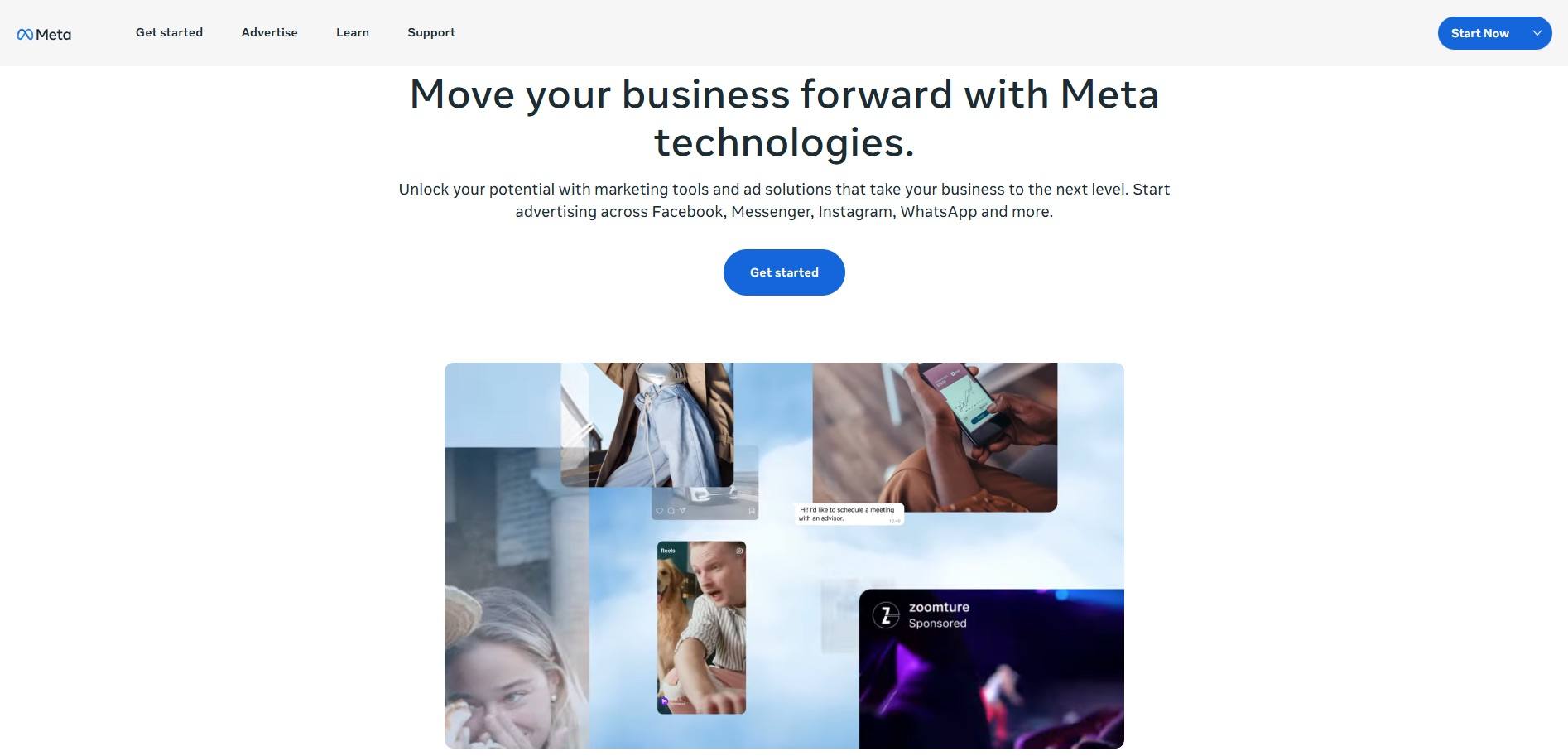
Align Platform Choice with Your Business Goals
Your platform selection should depend on where your audience spends their time and what you want to achieve:
- Want to capture high-intent buyers?—use Google Search Ads to appear when people are actively searching for products or services.
- Targeting specific demographics or interests?—Meta Ads (Facebook & Instagram) provide deep audience segmentation.
- Selling visually appealing products?—Pinterest Ads and Instagram Shopping Ads drive high engagement for eCommerce.
- Want to leverage video content?—YouTube and TikTok Ads offer powerful engagement and storytelling opportunities.
Start with 1-2 Platforms
Instead of spreading your budget too thin, test one or two platforms based on where your ideal customers are most active.
Example Strategy
A local fitness studio targeting young professionals could start with Instagram and Facebook ads, using interest-based targeting (e.g., people who follow fitness influencers).
If they want to reach users actively searching for personal training, they could add Google Ads for relevant local searches like “best personal trainer near me.”
By strategically choosing your ad platform, you’ll maximize your budget and ensure your campaigns reach the right people at the right time.
4. Craft Compelling Ad Creative
Your ad creative is the first thing people see—it determines whether they scroll past or take action.
A strong ad should grab attention, spark interest, and drive conversions within seconds.
Key Elements of High-Performing Ad Creative
- Engaging visuals—use high-quality images, videos, or animations to stand out. Bright colors, human faces, and dynamic movement often perform best.
- Clear and concise messaging—keep your copy short and to the point. Highlight the benefit of your product or service in as few words as possible.
- Strong call-to-action (CTA)—tell people exactly what to do next. Use action-oriented phrases like Shop Now, Sign Up Today, or Get Your Free Trial.
- Emotional triggers—tap into emotions like excitement, urgency, or trust. Testimonials, limited-time offers, and problem-solving messaging work well.
Examples of Effective Ad Formats
- Carousel Ads—showcase multiple products or features in a single ad (great for eCommerce).
- Short-Form Video Ads—use platforms like TikTok, Instagram Reels, and YouTube Shorts to drive engagement.
- Story Ads—full-screen, immersive ads that feel organic on Instagram and Facebook.
- Testimonial Ads—feature customer reviews or success stories to build credibility.
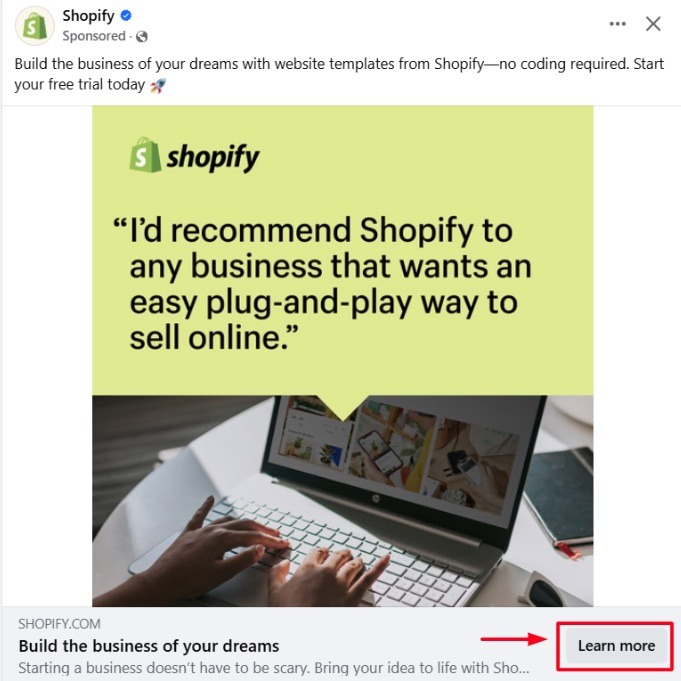
Use Free and Affordable Design Tools
Not a designer? No problem. Use tools like:
- Canva—create professional-looking graphics easily.
- Adobe Express—design engaging video ads.
- Meta Creative Hub—preview how ads will look before launching.
Example Strategy
A home cleaning service targeting busy professionals could use a short-form video ad showing a “before and after” transformation of a messy house.
The CTA could be: “Book Your Cleaning in 60 Seconds!” to drive quick action.
By combining eye-catching visuals, persuasive copy, and clear CTAs, your ad creative will drive better engagement and conversions—ensuring your budget is well spent.
5. Leverage Budgeting and Bidding Strategies
Small businesses often have limited ad budgets, making it crucial to allocate spending wisely.
A well-planned budgeting and bidding strategy ensures that every dollar works toward maximizing ROI.
How to Allocate Your Budget Strategically
- Start small and test—begin with a modest budget to test different ad creatives, audiences, and placements before scaling up.
- Prioritize high-performing campaigns—analyze results and shift more budget toward ads that generate the best return.
- Set daily or lifetime budgets—decide between:
- Daily budget (spreads spending evenly each day)
- Lifetime budget (spends over a set period, useful for short-term promotions)
Understanding Bidding Options
Each platform offers different bidding strategies that determine how your ad budget is spent:
| Bidding Type | Best For | How It Works |
|---|---|---|
| CPC (Cost Per Click) | Driving website traffic and lead generation | You pay each time someone clicks on your ad |
| CPM (Cost Per Mille/1,000 Impressions) | Brand awareness and visibility | You pay for every 1,000 times your ad is shown |
| CPA (Cost Per Action) | Lead generation and conversions | You pay only when a user completes a desired action (e.g., form submission, purchase) |
| ROAS (Return on Ad Spend Targeting) | Maximizing revenue | Automatically adjusts bids to optimize for higher revenue |
Start with a test budget
A small eCommerce brand selling handmade candles starts with a $10/day test budget on Meta Ads.
They run two ad variations—one with a product image, another with a customer testimonial video.
After a week, they find the testimonial ad has a lower cost per conversion and shift more budget toward it.
Regularly monitor, analyze, and adjust your bids and budget to maximize efficiency. Over time, this data-driven approach will help you scale your paid advertising campaigns profitably.
If your goal is lead generation, you’ll optimize for conversions rather than clicksClick To Post On6. Use Advanced Targeting and Retargeting
Reaching the right audience is just as important as having a great ad.
Advanced targeting and retargeting strategies help ensure your ads appear to people who are most likely to convert.
Advanced Targeting Strategies
- Lookalike audiences—platforms like Meta Ads and Google Ads can find new customers similar to your existing buyers.
- Behavioral targeting—target users based on their online actions, such as websites they visit, products they browse, or content they engage with.
- Interest-based targeting—show ads to users who follow competitors, engage with relevant industry topics, or interact with specific content.
- Demographic and geographic targeting—refine your audience based on age, location, job title, and even income level (useful for local businesses).
Retargeting: Re-Engage Interested Users
Most people don’t convert on their first visit—but retargeting can bring them back.
Here are some examples of retargeting strategies:
- Website visitors—show ads to people who visited your website but didn’t take action.
- Abandoned cart ads—remind users who left items in their cart to complete their purchase.
- Engagement retargeting—target users who interacted with your social media posts but haven’t visited your site yet.
Set Up Tracking Pixels
To run effective retargeting campaigns, install tracking pixels like:
- Meta Pixel—tracks user activity on your website for Facebook and Instagram retargeting.
- Google Tag Manager—helps track conversions, events, and audience behaviors across multiple platforms.
A local yoga studio installs the Meta Pixel on its website.
Users who visit the class schedule page but don’t sign up are later shown a retargeting ad offering a 10% discount on their first class.
By combining advanced targeting and retargeting, you can reduce wasted ad spend and improve conversions, ensuring your paid campaigns work harder for your business.
7. Test, Measure, and Optimize Campaign Performance
Even the best-paid advertising campaigns require ongoing testing and optimization to maximize results.
By continuously analyzing performance data, you can refine your strategy and increase ROI.
Key Performance Metrics to Track
To measure success, focus on these essential ad performance metrics:
| Metric | What It Measures | Why It Matters |
|---|---|---|
| CTR (Click-Through Rate) | Percentage of users who clicked on your ad | Indicates how compelling your ad is |
| Conversion Rate | Percentage of clicks that led to a desired action (e.g., sale, sign-up) | Shows how well your landing page and ad work together |
| CPC (Cost Per Click) | The cost of each click on your ad | Helps optimize budget efficiency |
| CPA (Cost Per Action) | The cost of each conversion (purchase, lead, etc.) | Ensures profitability |
| ROAS (Return on Ad Spend) | Revenue generated for every dollar spent on ads | Determines overall campaign profitability |
A/B Testing: Find What Works Best
A/B testing (also called split testing) allows you to compare different versions of your ads to see which performs better.
Elements you can test include the following:
- Ad creatives—try different images, videos, or colors.
- Ad copy—experiment with different headlines, CTAs, and messaging styles.
- Audience segments—test variations in targeting (e.g., age groups, interests).
- Ad placement—compare results from Facebook Feed vs. Instagram Stories vs. Google Search Ads.
A small SaaS company runs two Facebook ads—one featuring a testimonial video and another with a static image and bold text.
After a week, they notice the video ad has a higher CTR and lower CPA, so they allocate more budget to that version.
Set Up a Weekly Review Process
Review campaign data every week to:
- Pause underperforming ads.
- Adjust budget allocation based on results.
- Identify trends and insights to refine future campaigns.
By constantly testing and optimizing, you ensure your paid advertising campaigns keep improving—leading to higher conversions and lower costs over time.
8. Combine Paid Ads with Organic Content Strategies
Paid advertising works best when combined with a strong organic marketing strategy.
By integrating the two, you can increase brand trust, lower ad costs, and drive long-term sustainable growth.
Why Integration Matters
- Builds credibility—users trust businesses that have an active online presence beyond just ads.
- Reduces ad costs—high-performing organic content can be repurposed for paid campaigns, lowering creative expenses.
- Boosts engagement and retention—organic content keeps audiences engaged between paid ad campaigns.
How to Combine Paid and Organic Strategies
- Boost high-performing organic posts—if a social post is getting great engagement, amplify its reach with paid promotion.
- Use paid ads to grow your email list—offer a free lead magnet (e.g., eBook, webinar) in exchange for an email sign-up. Then, nurture these leads through organic email marketing.
- Drive traffic to value-driven content—instead of just running sales-focused ads, send paid traffic to blog posts, case studies, or educational videos to build brand authority.
- Retarget engaged organic visitors—use retargeting ads to re-engage users who visited your blog, watched a video, or engaged with your content but didn’t convert.
Leverage SEO and paid search together
A small accounting firm publishes a blog titled "Top Tax-Saving Tips for Small Businesses."
Over time, it ranks well in Google searches. To maximize impact, they run a Google Search Ad targeting business owners searching for tax advice, bringing even more traffic to the post.
They then retarget visitors with a lead-generation ad offering a free tax consultation.
By combining paid and organic strategies, you create a sustainable marketing ecosystem where paid ads drive immediate results, and organic content builds long-term brand equity.
Frequently Asked Questions
Why is defining clear objectives for paid ad campaigns important?
Clear objectives focus your audience, track success, and optimize ad spend.
How can small businesses define their target audience?
Analyze customer data, conduct surveys, use analytics tools, and study competitor targeting.
What are common advertising goals for small businesses?
Brand awareness, website traffic, lead generation, and direct sales.
How should businesses choose the best advertising platform?
Select platforms aligning with audience behavior and business goals.
Why is it important to combine paid ads with organic content strategies?
Using paid ads and organic content strategies together builds credibility, reduces costs, and drives sustainable growth.
To Conclude
Paid advertising can be a powerful growth engine for small businesses—when done right.
By setting clear objectives, targeting the right audience, choosing the best platforms, and continuously optimizing performance, you can maximize your ad spend and drive real, measurable results.
Remember, the best campaigns combine data-driven strategies with engaging content.
Start small, test often, and refine your approach based on insights.
With the right mindset and execution, even a modest budget can deliver a big impact.
